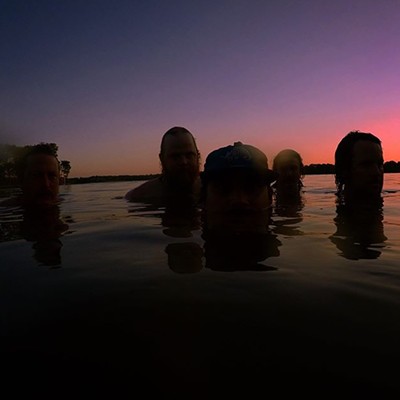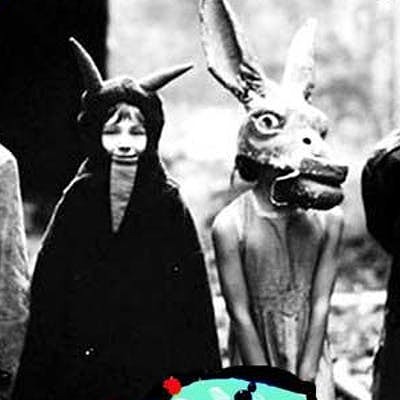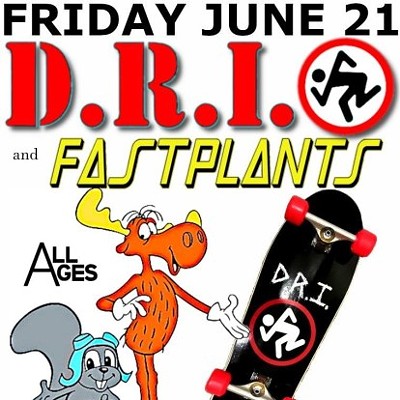In foodie culture, there's a pervasive thought that smaller is better.
The independent butcher is turning out better steaks than the guy working behind the glass at Safeway. The grower with a tiny farm, handpicking tomatoes and selling them at a farmers' market, has a better product than what's produced at the large commercial farm. With beer, it's accepted as fact by quite a few people that a microbrew—preferably local—is going to be better than the mass-market beers produced by the dominant global brewers.
However, in the liquor business, when most people order a drink, they stick to big names—Jack Daniel's, Smirnoff, Bacardi, etc. Well, there's good news: Microdistillers are starting to compete for your booze dollars.
But there's bad news, too: They haven't made much progress in Tucson (or Arizona) yet.
Considering the rapidly expanding number of people who obsess about where their food comes from—people who value smaller-scale production—craft liquor seems like a logical next step, but the concept itself is relatively new. Talking to Matthew Colglazier of American Craft Spirits, a website that extensively covers the products of the American microdistilling wave, you get a sense that whatever becomes of these distillers, we're still in the very beginning of the movement's history.
"Very, very recently, five or six years ago, you could name every small distiller, but now we're seeing 30, 40, 50 a year opening up," Colglazier says during a phone interview.
These new distilleries have largely popped up in states—like New York—which have relaxed the laws for distilleries, granting a more affordable license to smaller-scale producers.
So far, there are only two active microdistilleries in Arizona, although somewhat surprisingly, it's not the state standing in the way. Arizona essentially had no law on the subject when Mogollon Brewing in Flagstaff decided to expand into hard liquor in 2003. Dana Kanzler, founder and brewmaster for Mogollon and High Spirits Distillery, submitted a handmade form to apply to distill, since there wasn't one available for the process. His application was initially rejected, simply because there wasn't a law either permitting or prohibiting commercial distilling. After two years of working through legal channels and lobbying for changes to the Arizona Revised Statutes, legislation was passed which allowed High Spirits to open.
There are still a number of other hurdles for prospective microdistilleries to jump through, including federal licensing procedures and local health-department regulations. Jason Grossmiller, of Tempe based Arizona Distilling Company, has been working on opening a distillery for four years, with products set to be available by the end of 2011. "It's still a very new concept for everyone involved," Grossmiller says. "No one really knows what to do, since they see it as a couple of guys with a still."
Beyond getting papers in order to start making liquor, microdistillery startups need a great deal of money. Most of the people I spoke to estimated the general amount of cash needed to get the first drop of alcohol into a bottle to be in the $500,000 to $1 million range. And beyond the startup costs, federal excises and taxes are higher for liquor than for beer or wine, cutting into profits in the long-term.
Local brewers like Nimbus have discussed expanding into distilling for years, but have been held up due to the state of the economy. However, Nimbus managing partner James Counts says he's working to develop a plan to move forward with distilling later this year.
Even after getting a product out, there are obstacles in getting consumers to try what you've made. Aaron DeFeo, bar manager for Hotel Congress and Maynards Market and Kitchen, says that microdistilleries are producing "some of the best spirits around right now." He adds that some Tucson bars have embraced the concept—but customers are still attached to their existing preferences: When most people order a cocktail, they have an existing brand in mind, ordering, say, a Jack-and-Coke or a Hendrick's-and-tonic.
Kanzler believes that will change with time, as more distillers enter the market and bring more awareness to the products. "People are willing to pay a premium for quality, homemade product," he says, "but the learning curve might still be a couple of years."
Despite these obstacles, everyone I spoke to seemed enthusiastic about the future of craft liquor. Colglazier's website includes reviews of hundreds of liquors, and he has been impressed far more than he has been disappointed.
"There hasn't been a lot of time to age the liquors yet, and economically, it's tough, but we'll see great liquors hitting the market more frequently each year," Colglazier says.
Kanzler believes the market for microbrewed beers has become saturated. With so many quality beers widely available, the next field with room for creativity and economic growth could be distillates.
His advice to potential entrants into the marketplace? "It's a really fun line of work," Kanzler says, "and there's plenty of room for more distillers, especially locally."






